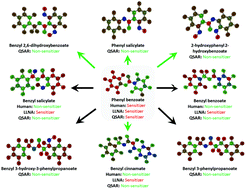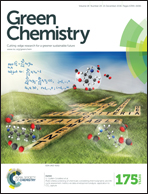QSAR models of human data can enrich or replace LLNA testing for human skin sensitization†
Abstract
Skin sensitization is a major environmental and occupational health hazard. Although many chemicals have been evaluated in humans, there have been no efforts to model these data to date. We have compiled, curated, analyzed, and compared the available human and LLNA data. Using these data, we have developed reliable computational models and applied them for the virtual screening of chemical libraries to identify putative skin sensitizers. The overall concordance between murine LLNA and human skin sensitization responses for a set of 135 unique chemicals was low (R = 28–43%), although several chemical classes had high concordance. We have succeeded to develop predictive QSAR models of all available human data with the external correct classification rate of 71%. A consensus model integrating concordant QSAR predictions and LLNA results afforded a higher CCR of 82% but at the expense of the reduced external dataset coverage (52%). We used the developed QSAR models for the virtual screening of the CosIng database and identified 1061 putative skin sensitizers; for seventeen of these compounds, we found published evidence of their skin sensitization effects. Models reported herein provide more accurate alternatives to LLNA testing for human skin sensitization assessment across diverse chemical data. In addition, they can also be used to guide the structural optimization of toxic compounds to reduce their skin sensitization potential.

- This article is part of the themed collection: Molecular Design for Reduced Toxicity

 Please wait while we load your content...
Please wait while we load your content...